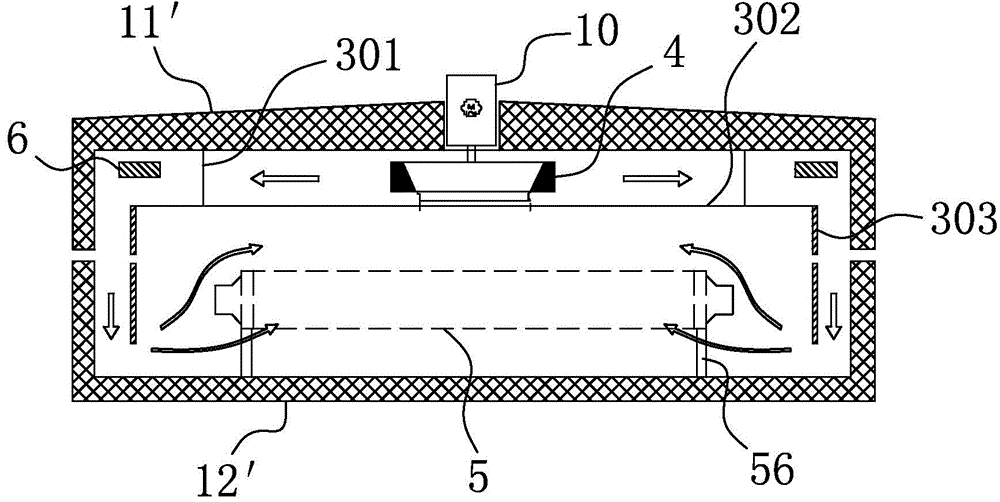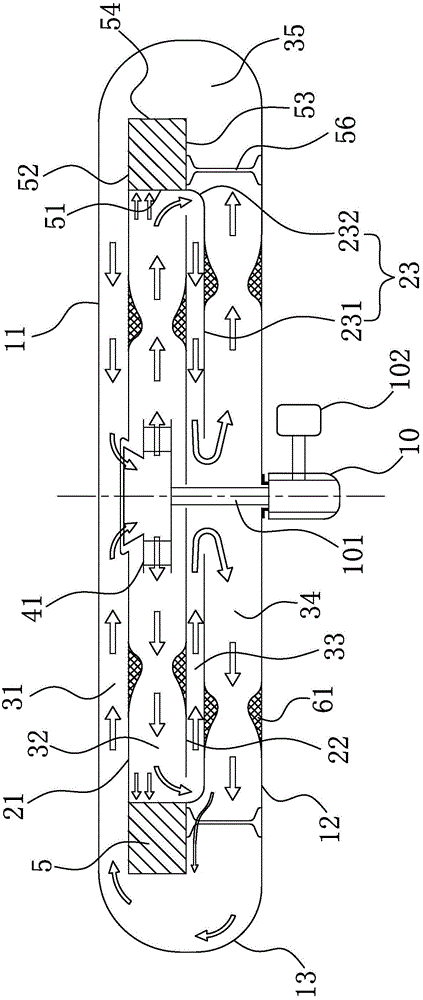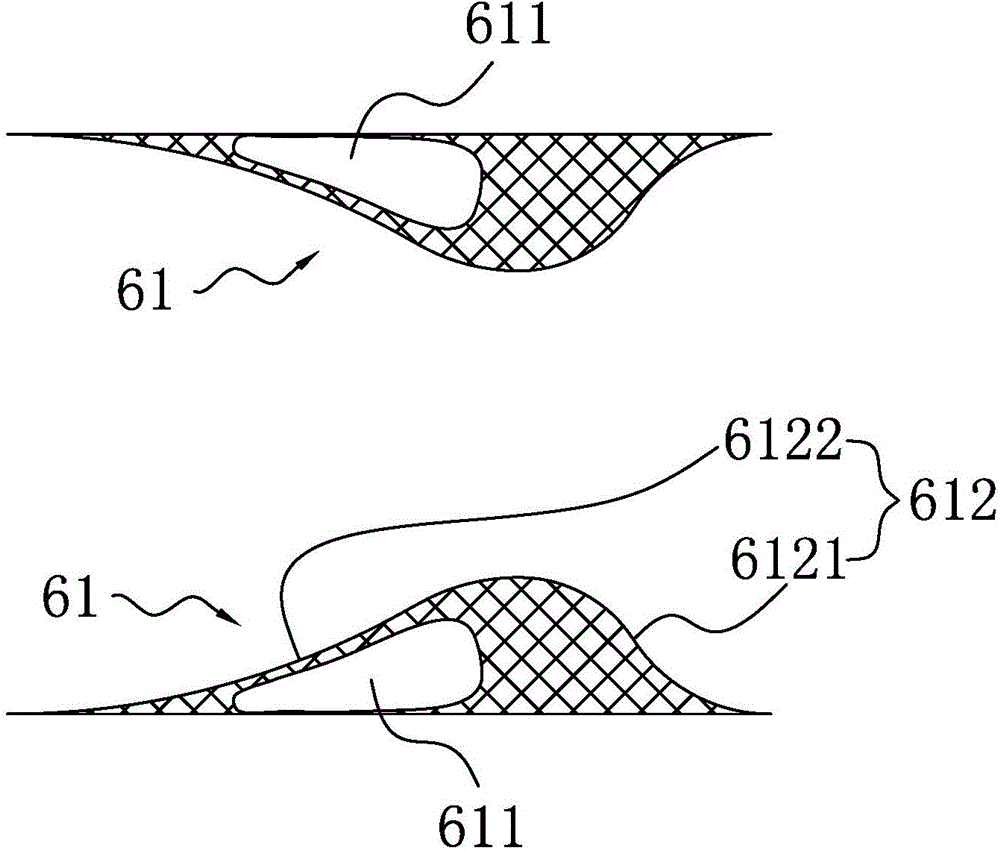Heating furnace of annular component
A technology for ring parts and heating furnaces, which is applied in heat treatment furnaces, furnaces, furnace types, etc., can solve the problems of asymmetric deformation of ring parts, radial deformation, poor field coordination, and slow temperature rise of ring parts, so as to make up for energy loss and improve Effect of field synergy and improvement of heating efficiency
- Summary
- Abstract
- Description
- Claims
- Application Information
AI Technical Summary
Problems solved by technology
Method used
Image
Examples
Embodiment 1
[0068] Such as figure 2 As shown, it is a schematic structural view of the heating furnace of the annular component in Embodiment 1 of the present invention. The heating furnace of the annular component in this embodiment includes a furnace body, a first centrifugal impeller 41 and a furnace for driving the first centrifugal impeller 41. Motor 10 is successively provided with a first flow-guiding partition 21, a second flow-guiding partition 22 and a third flow-guiding partition 23 from top to bottom in the body of heater, and on the top inner wall 11 of the body of heater, the first flow-guiding partition Between the plate 21, the second flow-guiding partition 22, the third flow-guiding partition 23 and the bottom inner wall 12 of the furnace body, the first airflow passage 31, the second airflow passage 32, and the third airflow passage are sequentially formed from top to bottom. Passage 33 and the 4th airflow passage 34, are provided with airflow heating accelerator in the...
Embodiment 2
[0083] Such as Figure 5 As shown, it is a schematic structural view of the heating furnace of the ring-shaped component in Embodiment 2 of the present invention. The difference between the heating furnace of the ring-shaped component in Embodiment 2 of the present invention and Embodiment 1 is that the third diversion plate 23 and the furnace body The second centrifugal impeller 42 is arranged between the bottom inner wall 12 of the bottom, and the gas flows into the air inlet of the second centrifugal impeller 42 after passing through the third air flow passage 33, and flows into the fourth airflow from the air outlet of the second centrifugal impeller 42 Channel 34.
[0084] After the gas hits the inner side wall of the ring part 5, the pressure decreases, and the second centrifugal impeller 42 boosts the air flow before the air flow flows to the fourth air flow passage 34, so that the speed at which the air flow hits the other surfaces of the ring part 5 is increased, ther...
PUM
 Login to View More
Login to View More Abstract
Description
Claims
Application Information
 Login to View More
Login to View More - R&D
- Intellectual Property
- Life Sciences
- Materials
- Tech Scout
- Unparalleled Data Quality
- Higher Quality Content
- 60% Fewer Hallucinations
Browse by: Latest US Patents, China's latest patents, Technical Efficacy Thesaurus, Application Domain, Technology Topic, Popular Technical Reports.
© 2025 PatSnap. All rights reserved.Legal|Privacy policy|Modern Slavery Act Transparency Statement|Sitemap|About US| Contact US: help@patsnap.com



